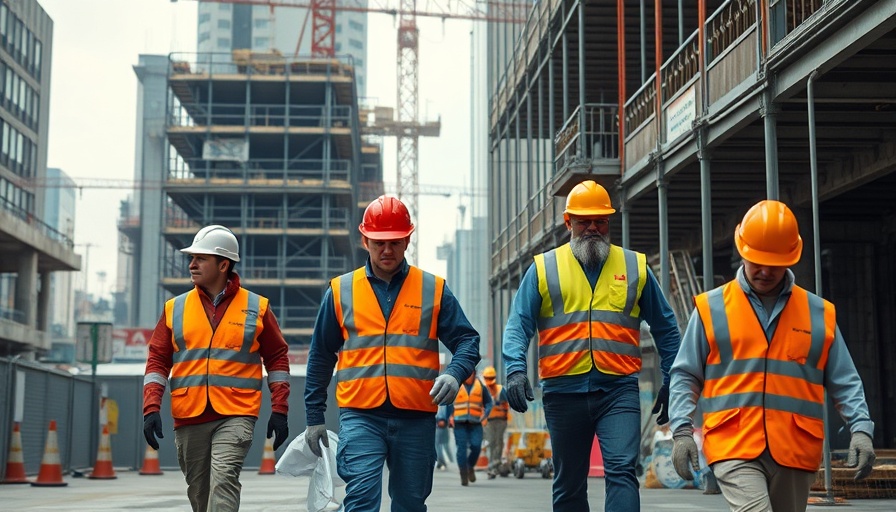
Positive Shift in Construction Safety Metrics
In an encouraging development for the construction industry, serious injuries and fatalities have seen a 17% decline in 2023, marking a pivotal shift in workplace safety. This improvement is laid out in ISN's recent report, which compiles data from OSHA records spanning 2017 to 2023. This report highlights that while the drop in recorded serious injury frequency (SIF) is heartening, it is offset by a worrying trend: the overall fatality rate has stalled across all sectors, particularly in construction, where it has hovered at approximately 10 jobsite deaths per 100,000 workers for the past decade.
The Stagnation of Fatality Rates: A Macro-Level Concern
Despite the decline in recordable injuries, the flatlining of fatality rates presents a sobering reality. Duane Duhamel, director of health, safety, and sustainability at ISN, notes that while some lagging indicators show improvement, the stagnation in fatalities suggests a deeper problem that transcends mere statistics. Over the last ten years, the drive for enhanced safety measures in construction seems insufficient to combat the complexity of jobsite hazards, which are amplified by the intersecting roles of various contractors and subcontractors.
Complex Hazards of High-Risk Environments
The construction environment is infamous for its multifaceted risks, stemming from moving vehicles, working at heights, and handling heavy equipment. Each of these hazards contributes to the industry's classification as a high-risk sector. As Duhamel points out, the continuous juggling of tasks by numerous personnel converges into a safety culture that is intricate and often problematic. Recognizing these challenges is crucial for formulating effective safety strategies to mitigate risks and enhance worker protection.
Cultivating a Safety-Centric Culture
One of the most significant insights from ISN's research underscores the critical role of organizational safety culture in diminishing workplace accidents. By fostering an environment where safety is prioritized—through robust training, hazard assessment practices, and a commitment to continuous improvement—contractors can start to shift this narrative. Duhamel echoes a sense of optimism, suggesting that with sustained efforts and training, the industry's safety performance will progressively improve.
Future Trends: Investing in Safety for Financial Returns
For business owners and property developers, the implications of these safety trends cannot be overlooked. Investing in comprehensive safety programs not only serves to safeguard workers but also translates to financial benefits in the form of reduced insurance premiums and greater worker productivity. Strategically positioned companies that emphasize health and safety may also find themselves more appealing to socially conscious clients, linking their operational success with ethical responsibility.
Taking Action: A Call for Commitment
As stakeholders in the construction sector—business owners, developers, and facility managers—recognize the vital importance of improving workplace safety, there is a collective responsibility to act. Embracing proactive safety measures is not merely regulatory; it is a pathway to innovation and growth in a fiercely competitive market. The question remains: how will your company take the lead in advancing safety culture on job sites, thereby ensuring both worker welfare and operational efficiency?
 Add Row
Add Row  Add
Add 




Write A Comment